Cotton Facts
We sleep in it, dry ourselves with it, wrap our bodies in it and we even cook with its oil.
Cotton is a natural fibre that grows on a plant.
- Cotton is an ideal crop for Australian conditions because it’s only grown when there’s water available.
- Approximately 90% of Australia’s cotton businesses are family farms, producing about 80% of the crop.
- Cotton can absorb up to 27-times its own weight in water.
- Australian cotton farmers use fewer natural resources than ever before to produce an environmentally sustainable crop.
- In an average year, Australia’s cotton growers produce enough cotton to clothe 500 million people.
- The Australian cotton industry produced a record crop in 2011/2012, with more than 583,000 hectares planted. This area produced more than 5 million bales, with a total forecast value of close to $3 billion.
- The major buyers of Australian cotton are currently China (30 percent), Bangladesh, Vietnam, India, Indonesia, Turkey and Thailand (source: Australian Cotton Shippers Association, 2018).
Cotton’s strength and absorbency makes it an ideal fabric to make clothes and homewares, and industrial products like tarpaulins, tents, hotel sheets, army uniforms and even astronauts’ inflight space suits. Cotton fibre can be woven or knitted into fabrics including velvet, corduroy, chambray, velour, jersey and flannel.
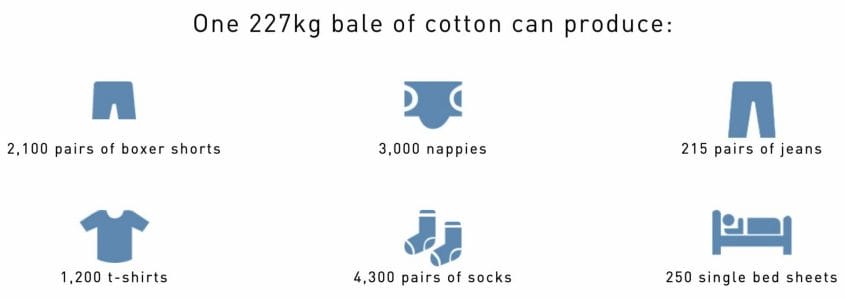
Where Is Cotton Grown?
Approximately 66% of Australia’s cotton is grown in NSW and 33% in Queensland.
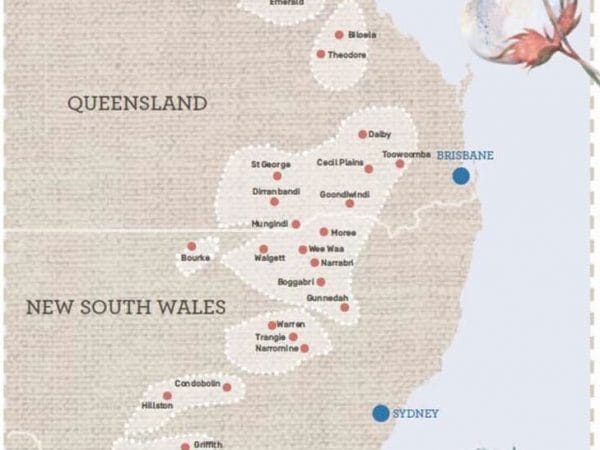
Discover the Australian Cotton Story
Watch this short film showing the story of how a pair of Australian cotton socks are made, from the field right through to the end product. It’s told by the people who make it happen. Discover where your cotton socks and clothes come from. Later in this module, there will be a quiz on this.
The Benefits of Cotton
Almost all parts of the cotton plant are used in some way, from the lint, cottonseed, linters to the stalks and seed hulls.
Cotton Fibre
Cotton fibre is processed into yarn and fabric, the seeds can be crushed for oil or animal feed, the linters (small fibres left on the seed following the ginning process) are used to make products like cotton balls, and the remaining plant material is either mulched or even composted and reapplied to the soil. Cotton seed plays a very important role during times of drought as a livestock feed.
Because cotton is a soft, absorbent and breathable natural fibre, it makes a perfect material for clothing and undergarments worn close to the skin.
Cotton keeps the body cool in summer and warm in winter because of its good heat conducting properties. It is non-allergenic and, unlike synthetic fibres, is a natural product that contains no chemicals. Due to its natural whiteness and high rate of absorbency, cotton is one of the best fabrics to dye.
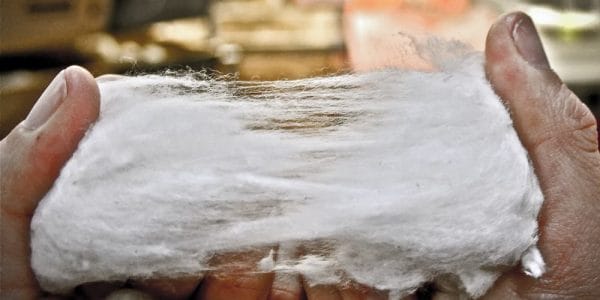
Cotton seed
Cotton is a food and a fibre crop. Cottonseed, which makes up around half the weight of the picked cotton, is fed to cattle and crushed to make oil. One tonne of cotton seed yields approximately 200kg of oil, 500kg of cotton seed meal and 300kg of hulls.
Cottonseed oil is cholesterol free, high in polyunsaturated fats and contains high levels of anti-oxidants (vitamin E), which contribute to its long shelf life. This cotton seed oil is used for cooking and in products like soap, margarine, emulsifiers, cosmetics, pharmaceuticals, rubber and plastics.
The by-product of the oil-extraction process is meal, which is used as stock feed. Cotton seed meal is a high protein meal that can be fed to most animals. Cotton seed hulls are also a valuable feed source for livestock.
Global cotton seed production can potentially provide protein requirements for hundreds of millions of people and animals.

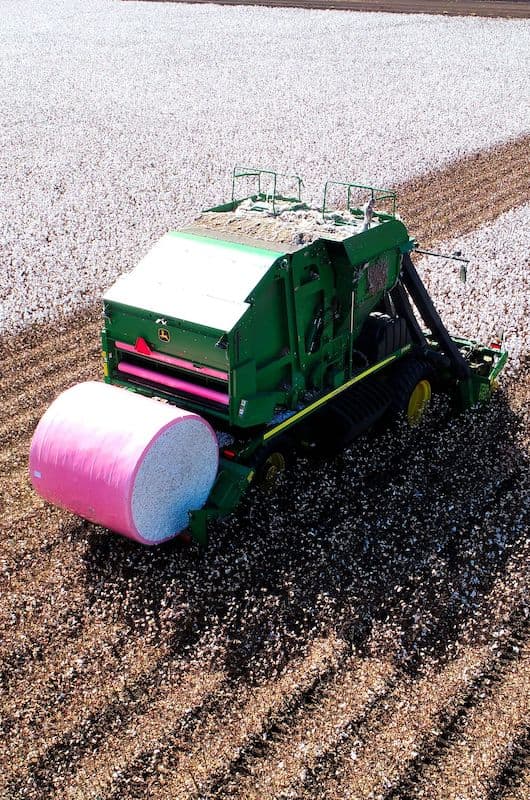
The Cotton Growth Cycle
Cotton is grown commercially as an annual shrub and reaches about 1.2 metres in height. Its leaves are broad and heart-shaped with coarse veins and three to five lobes. The plant has many branches, with one main central stem. Each plant’s taproot can reach a depth of 1.5 metres.
Squares (flower buds) develop several weeks after the plant starts to grow, with flowers appearing a few weeks later. The flowers then drop, leaving a ripening seed pod that becomes the cotton boll (the fruit) after pollination. The plant also produces seeds that are contained in small capsules surrounded by fibre in the cotton bolls.
Each cotton boll usually contains 27-45 seeds and attached to each seed is between 10,000 – 20,000 tiny fibres about 28mm in length. When it’s mature, the crop is picked and ginned. Ginning is the process that separates the cotton fibre (or lint) from the seed.
Diagram: There are 8 main stages in the growth of cotton from seed to picking.
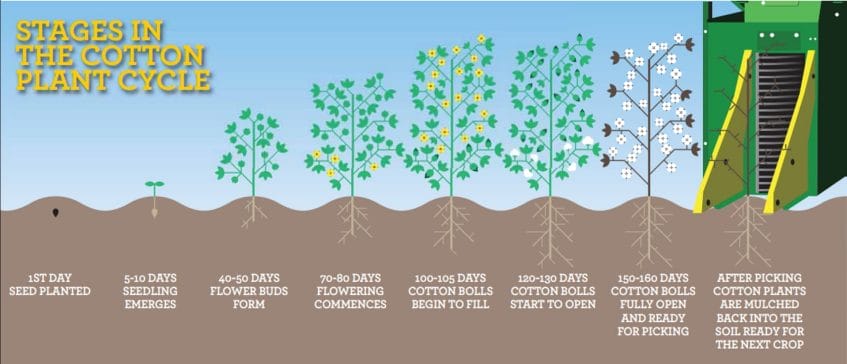
NOTE: In the following pages, there are 3 videos for you to watch. As you watch the videos, take notes as there will be a short quiz after it.
How Does Cotton Grow in Australia?
In this video by Bess O’Connor, she gives us a basic breakdown of an Australian cotton season. Bess’s family are irrigated cotton growers from Mungindi in NSW and their average yield is 5-5.5 bales per acre. (Bess O’Connor: 6.2.2012)
In this video, you will meet cotton grower Daniel Kahl from Wee Waa in NSW who talks about how cotton is grown in his area. You will also meet John O’Connor from Australian Textiles Mills to share how towels are made from cotton.
Growing Cotton in Rotation
Cotton takes about six months to grow from seed to picking and farmers only grow cotton when there is enough water available. Cotton farmers are generally mixed farmers which means they grow other crops on their farms besides cotton. These crops are grown in rotation, this means the farmer plans which crops will follow each season to keep the soil healthy and break the cycle of pests and diseases. Cotton farmers will often stock livestock such as beef cattle and will always have an area set aside for native vegetation.
This video will give you a quick overview of crop rotation.
In the video below, Tim Weaver (CSIRO) summarises some of the findings from a cotton rotation trial that has been running for more than two decades at the Australian Cotton Research Institute.
